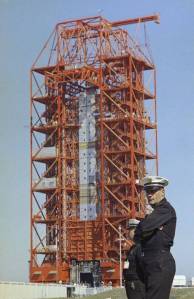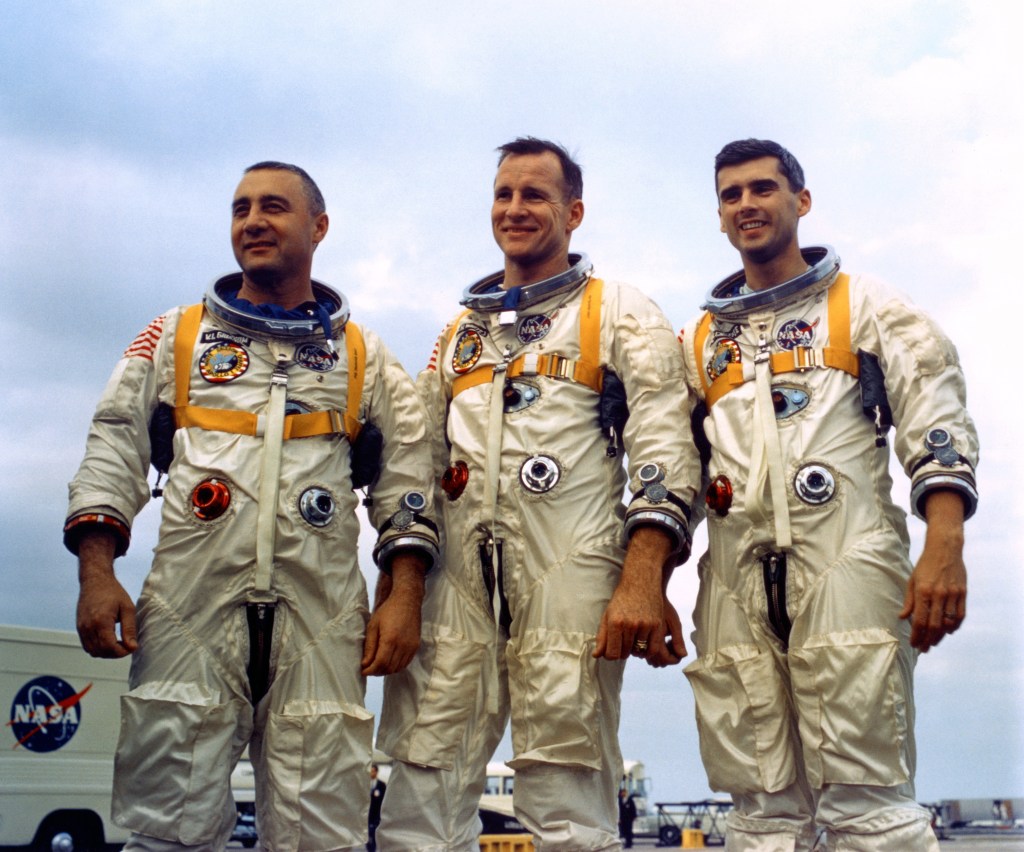
Apollo 1
On Jan. 27, 1967, tragedy struck on the launch pad at Cape Kennedy during a preflight test for Apollo 204 (AS-204). The mission was to be the first crewed flight of Apollo, and was scheduled to launch Feb. 21, 1967. Astronauts Virgil Grissom, Edward White and Roger Chaffee lost their lives when a fire swept through the command module.
Mission Type
SCHEDULED TO LAUNCH
Apollo 1 Tragedy
Jan. 27, 1967, tragedy struck on the launch pad at Cape Kennedy during a preflight test for Apollo 204 (AS-204). The mission was to be the first crewed flight of Apollo, and was scheduled to launch Feb. 21, 1967. Astronauts Virgil Grissom, Edward White and Roger Chaffee lost their lives when a fire swept through the command module, or CM.
The exhaustive investigation of the fire and extensive reworking of the Apollo command modules postponed crewed launches until NASA officials cleared them for flight. Saturn IB schedules were suspended for nearly a year, and the launch vehicle that finally bore the designation AS-204 carried a lunar module, or LM, as the payload, instead of a CM. The missions of AS-201 and AS-202 with Apollo spacecraft aboard had been unofficially known as Apollo 1 and Apollo 2 missions. AS-203 carried only the aerodynamic nose cone.
In the spring of 1967, NASA’s Associate Administrator for Manned Space Flight, Dr. George E. Mueller, announced that the mission originally scheduled for Grissom, White and Chaffee would be known as Apollo 1, and said that the first Saturn V launch, scheduled for November 1967, would be known as Apollo 4. The eventual launch of AS-204 became known as the Apollo 5 mission. No missions or flights were ever designated Apollo 2 or 3.
The second launch of a Saturn V took place on schedule in the early morning of April 4, 1968. Known as AS-502, or Apollo 6, the flight was a success, though two first-stage engines shut down prematurely, and the third-stage engine failed to reignite after reaching orbit.
Remembering Apollo 1
Read detailed biographies, reports, bibliographies, and other resources relating to the Apollo 1 tragedy that took the lives of Gus Grissom, Ed White, and Roger Chaffee.
Learn More
Crew
Virgil I. Grissom
Edward H. White
Roger B. Chaffee
Backup Crew
Walter M. Schirra Jr.
Donn F. Eisele
Walter Cunningham
Payload
Spacecraft-012
Apollo Pad Fire
Emergency Transmission: Jan. 27, 1967; 6:31:05 p.m. EST
Launch Complex 34
Saturn-IB AS-204
CSM-012
Houston We Have a Podcast: Apollo 1 Fire
Apollo 1 Content

“Three valiant young men have given their lives in the nation’s service. We mourn this great loss and our hearts…

On Jan. 27, 1967, with the planned launch of the first Apollo mission to carry a crew just 25 days…

With President John F. Kennedy’s end-of-the-decade target of landing a man on the Moon approaching, NASA set ambitious goals for…

In December 1966, preparations continued for the first crewed Apollo mission, officially designated as AS-204 but better known as Apollo…

In November 1966, with the Gemini program successfully completed, NASA set its sights on the first Apollo mission to carry…

Leerlo en español aquí. The crews of Apollo 1 and space shuttles Challenger and Columbia, as well as other fallen…
Detailed Historical Resources

Apollo 204 Biographies, History, and Reports
Read detailed biographies of the crew, learn more about the accident and the investigation that followed, and explore an annotated bibliography for further reading. This site includes the final report of the Investigation Board and the report to the Senate.











































